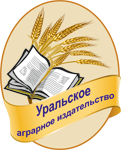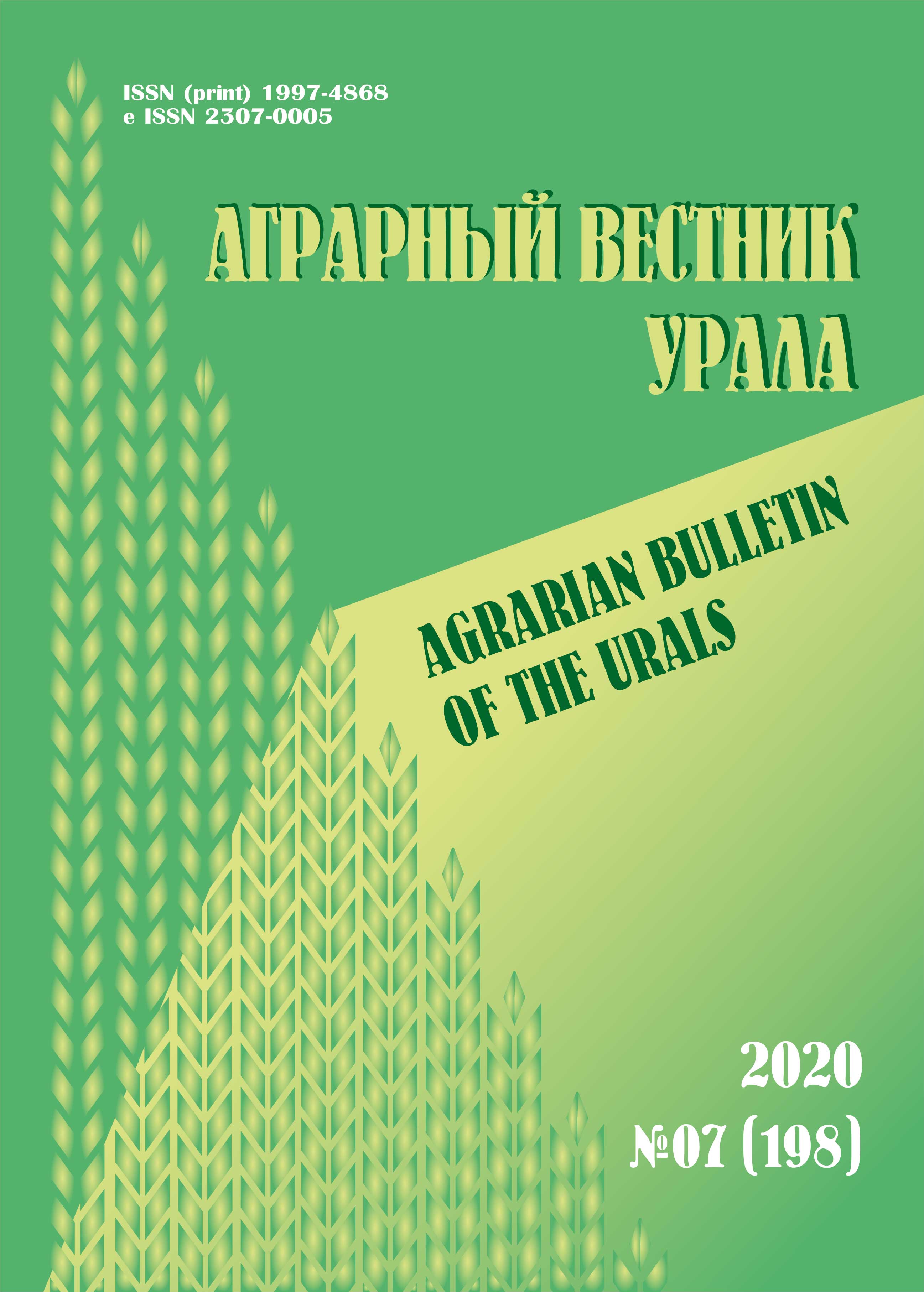Russian Federation
Russian Federation
Abstract. The disparity of prices between the means of production and crop production leads to a decrease in the efficiency of resource use and the overall profitability of production. In order to stabilize the work of agricultural enterprises in such conditions, in addition to the necessary state support, it is important to find internal reserves in crop production. The purpose is to study the state and possibilities of improving the efficiency of resource use in crop production. The objectives of the study were the analysis of data reflecting the options for saving resources when cultivating field crops in the conditions of the Kurgan region. The methods of monographic, mathematical, and statistical analysis of data from literary sources, annual reports of agricultural enterprises of the Kurgan region, and research results of the Kurgan Research Institute were used. Scientific novelty. The work consists in the application of a dynamic method for calculating the economic efficiency of previously tested technologies in various time-varying economic conditions, which makes it possible to more reasonably build long-term plans. It is established that the factors of increasing the efficiency of the use of natural and material resources can be the diversification of acreage by increasing the share of winter, leguminous and oilseed crops and increasing the accuracy of the use of resources using digital methods. The results of the study showed that the diversification of acreage makes it possible to distribute field work more efficiently, save resources and receive higher incomes, and stabilize the financial condition of agricultural enterprises. Parallel driving systems and equipment monitoring allow you to save fuel, fertilizers, seeds, plant protection products. The operation of the equipment with the help of navigation equipment in the dark ensures the execution of technological operations within the regulatory deadlines and thereby allows to increase crop yields by 5–10 %. The additional income from the parallel driving system is on average 2155 rubles/ha. Designing technologies based on electronic maps and field history books allows you to differentiate resources by fields in accordance with soil, agrochemical and agrotechnical conditions.
prices, price disparity, cost of resources, resource saving, economic efficiency, digital management methods, diversification of sown areas, electronic book of field history
1. Kiryushin V. I., Kiryushin S. V. Agrotehnologii: uchebnik. - Sankt-Peterburg: Lan', 2015. 464 s. EDN: https://elibrary.ru/VLRHMB
2. The World of 2035. Global Outlook / Prof. Alexander Dynkin, ed. Moscow: Magistr, 2018. 304 p.
3. Oborin M. S. Cifrovye innovacionnye tehnologii v sel'skom hozyaystve // Agrarnyy vestnik Urala. 2022. № 5 (220). S. 82-92. DOI:https://doi.org/10.32417/1997-4868-2022-220-05-82-92. EDN: https://elibrary.ru/MVGSXW
4. Sharkov I. N. Intensifikaciya agrotehnologiy - glavnyy prioritet Sibirskogo zemledeliya // Nauka i tehnologii Sibiri. 2021. № 3. S. 13-19.
5. Gilev S. D., Cymbalenko I. N., Kopylov A. N. [i dr.] Effektivnost' poseva bez osnovnoy obrabotki pochvy v plodosmennom i zernoparovom sevooborotah central'nogo lesostepnogo Zaural'ya // Zemledelie. 2021. № 6. S. 3-8. DOI:https://doi.org/10.24412/0044-3913-2021-6-3-8. EDN: https://elibrary.ru/UBSUTU
6. Truflyak E. V., Kurchenko N. Yu. Ocenka gotovnosti regionov k vnedreniyu cifrovyh tehnologiy v sel'skoe hozyaystvo // Vestnik Samarskogo gosudarstvennogo ekonomicheskogo universiteta. 2019. № 10 (180). S. 22-26. EDN: https://elibrary.ru/ZOATGG
7. Shatalina L. P. Tochnoe zemledelie kak odin iz putey k energosberezheniyu resursov v sel'skohozyaystvennom proizvodstve // APK Rossii. 2017. T. 24. № 4. S. 949-953. EDN: https://elibrary.ru/ZXVQTF
8. Stepnyh N. V., Nesterova E. V., Zargaryan A. M. Vliyanie cifrovizacii upravleniya agrotehnologiyami na effektivnost' ispol'zovaniya resursov // APK: Ekonomika, upravlenie. 2020. № 8. S. 46-65. DOI:https://doi.org/10.33305/208-46. EDN: https://elibrary.ru/HZMWGV
9. Larina T. N., Zavodchikov N. D. Potencial i perspektivy razvitiya «cifrovogo» sel'skogo hozyaystva v Rossii // Nikonovskie chteniya: periodicheskiy sbornik materialov konferencii. 2018. № 23. S. 283-285.
10. Logachev A. S., Abramov N. V. Agroekologicheskoe obosnovanie zaschity rasteniy s ispol'zovaniem sputnikovyh sistem // Aktual'nye voprosy nauki i hozyaystva: novye vyzovy i resheniya: sbornik materialov LIII Mezhdunarodnoy studencheskoy nauchno-prakticheskoy konferencii. Tyumen', 2019. S. 287-291. EDN: https://elibrary.ru/ABFXEO
11. Chikishev D. V. Optimizaciya mineral'nogo pitaniya yarovoy pshenicy pri differencirovannom vnesenii mineral'nyh udobreniy s ispol'zovaniem sputnikovoy navigacionnoy sistemy: avtoref. dis. … kand. s.-h. nauk. Novosibirsk, 2022. 22 s. EDN: https://elibrary.ru/TLWNMG
12. Kozubenko I. S. Pochvennaya informaciya v analiticheskom centre Minsel'hoza Rossii // Byulleten' Pochvennogo instituta im. V. V. Dokuchaeva. 2018. № 92. S. 3-15. DOI:https://doi.org/10.19047/0136-1694-2018-92-3-15. EDN: https://elibrary.ru/XOYDBZ
13. Bulanov K. A., Denisov P. V., Lupyan E. A. [i dr.] Blok raboty s dannymi distancionnogo zondirovaniya Zemli Edinoy federal'noy informacionnoy sistemy o zemlyah sel'skohozyaystvennogo naznacheniya // Sovremennye problemy distancionnogo zondirovaniya Zemli iz kosmosa. 2019. T. 16. № 3. S. 171-182. DOI:https://doi.org/10.21046/2070-7401-2019-16-3-171-182. EDN: https://elibrary.ru/SXGLGW
14. Bulanov K. A., Denisov P. V., Kosogor S. N. [i dr.] Modul' raboty s dannymi distancionnogo zondirovaniya Zemli v Edinoy federal'noy informacionnoy sisteme o zemlyah sel'skohozyaystvennogo naznacheniya (EFIS ZSN) // Sovremennye problemy distancionnogo zondirovaniya Zemli iz kosmosa: sbornik tezisov dokladov shestnadcatoy Vserossiyskoy otkrytoy konferencii. Moskva, 2018. S. 3. URL: https://www.elibrary.ru/item.asp?id=36713022 (data obrascheniya: 14.07.2022). EDN: https://elibrary.ru/YSSNQL
15. Stepnyh N. V., Nesterova E. V., Zargaryan A. M., Kopylova S. A. Strategicheskoe znachenie diversifikacii rastenievodstva // Zemledelie. 2022. № 2. S. 7-13. DOI:https://doi.org/10.24412/0044-3913-2022-2-7-13. EDN: https://elibrary.ru/DNVBGB
16. Siptic S. O., Romanenko I. A., Evdokimova N. E. Model'nye ocenki vliyaniya klimata na urozhaynost' zernovyh i zernobobovyh kul'tur v regionah Rossii // Problemy prognozirovaniya. 2021. № 2 (185). S. 75-86. DOI:https://doi.org/10.1134/S1075700721020040. EDN: https://elibrary.ru/CXVXSU
17. Filippova E. A., Bannikova N. Yu., Mal'ceva L. T. [i dr.] Analiz pogodnyh usloviy v svyazi s vozdelyvaniem ozimoy pshenicy v lesostepnoy zone Zaural'ya // Vestnik Kazanskogo gosudarstvennogo agrarnogo universiteta. 2022. T. 17. № 1 (65). S. 32-37. DOI:https://doi.org/10.12737/2073-0462-2022-32-37. DOI: https://doi.org/10.12737/2073-0462-2022-37-42; EDN: https://elibrary.ru/ITMRCU
18. Baysholanov S. S., Baybazarov D. K. Vliyanie izmeneniya klimata na urozhaynost' yarovoy pshenicy // Gidrometeorologiya i ekologiya. 2013. № 1 (68). S. 16-23.
19. Vorotnoy I. Kazahstan pereydet s pshenicy na podsolnechnik [Elektronnyy resurs]. URL: https://inbusiness.kz/ru/news/kazahstan-perejdet-s-pshenicy-na-podsolnechnik (data obrascheniya: 22.06.2022).
20. Stepnyh N. V., Nesterova E. V., Zargaryan A. M. Perspektivy rasshireniya proizvodstva maslichnyh kul'tur v Ural'skom regione // Agrarnyy vestnik Urala. 2021. № 5 (208). S. 89-102. DOI:https://doi.org/10.32417/1997-4868-2021-208-05-89-102. EDN: https://elibrary.ru/TLLZAH









